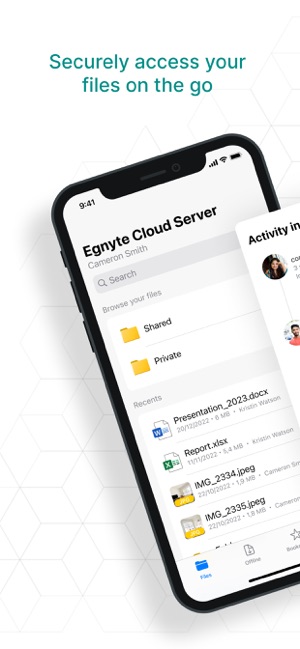Firm in the Clouds
Studio+ Embraces Cloud-Based Architecture for Enhanced Collaboration
In a world driven by technological innovation and the ever-expanding demands of a modern workforce, companies must constantly adapt to remain competitive. Studio+ embarked on a transformative journey from a localized server setup to a cloud-based infrastructure. This strategic move was rooted in our need for improved collaboration, streamlined maintenance, and reduced costs across multiple locations. The transition took three months and involved the meticulous transfer of existing data, culminating in a cleaner, more organized file structure that reflects the firm’s commitment to innovation and efficiency.
WHY THE SWITCH?
Studio+’s expansion across various locations marked a pivotal moment in our evolution. With growth came the need for seamless collaboration among teams stationed in different geographic areas. The previous local server setup had its limitations. Remote users were tethered by the necessity of VPN access, leading to time-consuming connections and lost work due to frequent disconnections. The process was further hindered by the requirement for additional hardware in server rooms, causing frustration and inefficiency. Moreover, maintaining and upgrading these servers incurred considerable costs that could be better allocated elsewhere.
THE TRANSITION JOURNEY
DATA GATHERING AND RECONSTRUCTION
Over the span of three months, Studio+ embarked on a transformative journey. The first phase involved gathering existing data from the local servers, ensuring that no crucial information was left behind.
Then came the organization of this data, an opportunity we seized to revamp our file structure. This restructuring would pay dividends by simplifying file access and enhancing data retrieval efficiency.
STREAMLINING OPPORTUNITIES
Over the span of three months, Studio+ embarked on a transformative journey. The first phase involved gathering existing data from the local servers, ensuring that no crucial information was left behind.
Then came the organization of this data, an opportunity we seized to revamp our file structure. This restructuring would pay dividends by simplifying file access and enhancing data retrieval efficiency.
PROS OF CLOUD TRANSITION

The benefits of this bold transition quickly became evident. Gone were the days of VPN struggles, as the cloud-based architecture required no such barriers. This resulted in faster and more reliable remote work experience. Collaboration across Studio+’s six locations improved exponentially, with all company data accessible from one location. The ability to share files and large documents seamlessly transformed external coordination, saving valuable time in project execution. Perhaps most notably, the transition allowed for file access away from the studio, empowering employees to carry vital project data in the palm of their hands. The mobile accessibility proved invaluable during client meetings, job site visits, and punch walkthroughs.
Data transparency also saw a remarkable improvement. With version history and metadata information readily accessible, the potential for lost data through email exchanges or other transfer methods was greatly diminished. The integration of the cloud also ensured the continuity of Adobe files for request for proposal responses, eliminating concerns about broken links and lost work during the transition.
WHICH SOFTWARE?
In today’s hybrid and remote-first office environments, content is the most exposed data type. Egnyte’s all-in-one platform made it simple and easy for IT to manage and control a full spectrum of content risks – from accidental data deletion to data exfiltration to privacy compliance and much more – all while giving our team members the tools they need to work faster and smarter, from any cloud, any device, anywhere.
Learn more about Egnyte’s Cloud-Based Software at
Egnyte.com
CONSIDERATIONS AND FUTURE PATH
NAVIGATING CLOUD CHALLENGES
While the switch to the cloud brought about numerous advantages, Studio+ also recognized certain challenges. The need to purchase cloud storage, while essential, necessitated additional investments in backup solutions for future archiving. Furthermore, the cloud architecture incurs a per-user cost, which the firm had to factor into the budget. The migration demanded substantial IT efforts, underscoring the significance of proper planning and expertise.
AUTODESK
For tasks involving Autodesk files, Studio+ acknow-ledged that optimal utilization is achieved through Autodesk’s own cloud services. While the cloud-based infrastructure improved overall workflow, they recognized that further integration with Autodesk Construction Cloud could potentially enhance their Autodesk-specific projects.
LOOKING FORWARD
In the end, Studio+’s journey from a localized server setup to a cloud-based architecture stands as a testament to our commitment to progress. By embracing innovation and overcoming challenges, we have not only improved their operational efficiency but have also positioned ourselves as a forward-looking entity ready to adapt to the ever-changing landscape of the architecture and design industry.